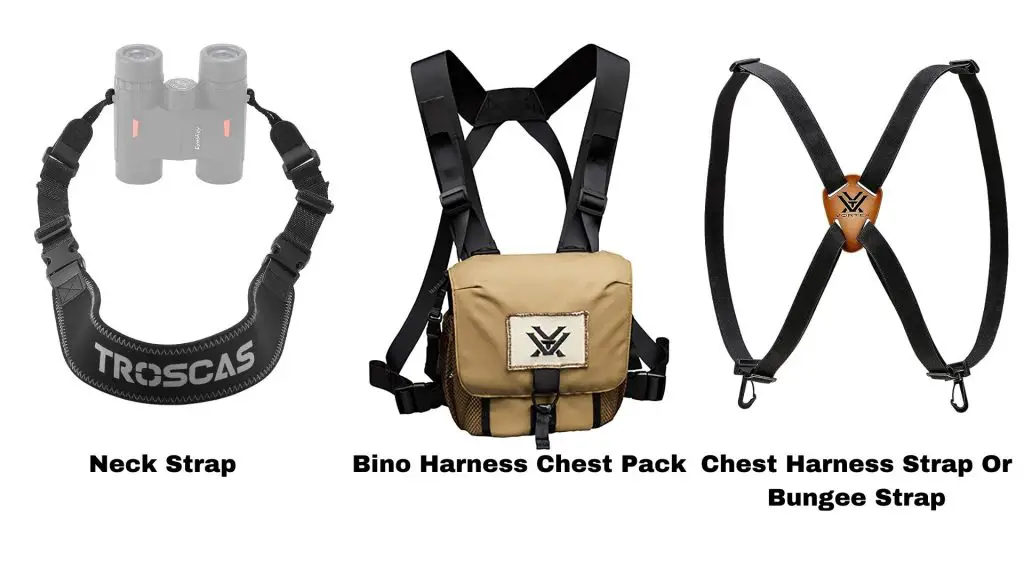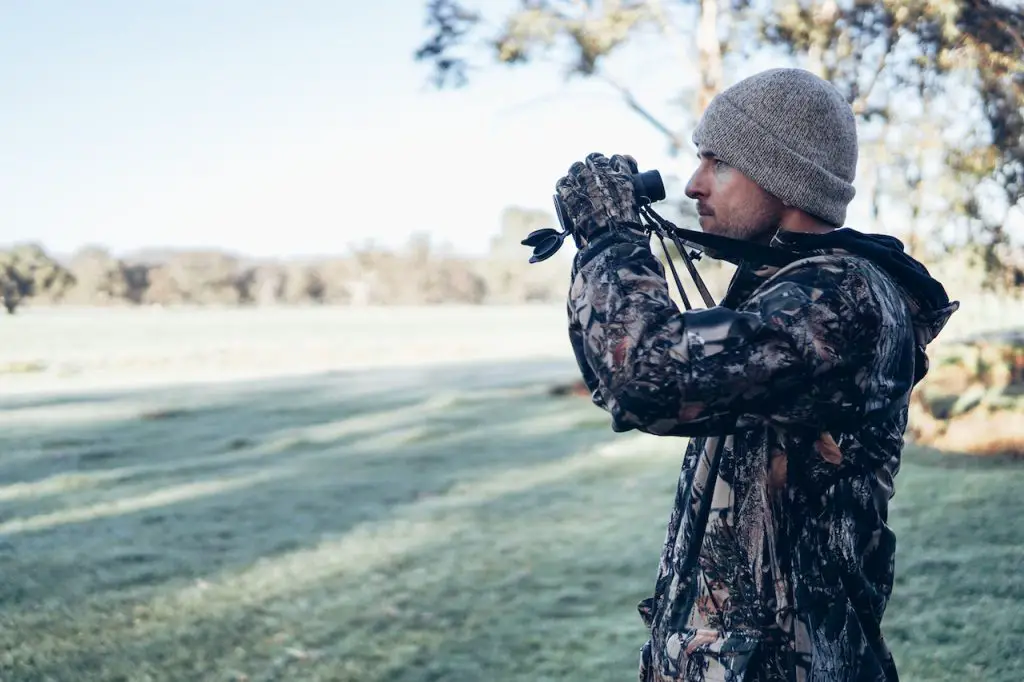Binoculars Harness Vs Strap
As we delve into nature’s wonders, finding the best way to carry and use binoculars becomes crucial for a comfortable and enjoyable experience.
Two popular options are binocular harnesses and straps (Neck Straps and Chest Harness Straps)
In this comparison article, we will explore all aspects of using binoculars with these two carrying methods, examining their features, benefits, and drawbacks to help you make an informed choice.

Convenience and Ease of Use
Binocular Harness:
Harnesses are designed to distribute the weight of binoculars evenly across your body, reducing strain and fatigue during long periods of use.
They offer a secure and stable fit, ideal for active outdoor activities like hiking, climbing, or birdwatching.
Putting on and taking off binoculars with a harness is relatively easy, making them a practical choice for users who frequently switch between using binoculars and other equipment.
Also Read: Do I need a Binoculars Harness
Straps:
Straps are of two types i.e.
- Chest harness straps(Also known as the basic harness) &
- Neck straps
These provide a simple and budget-friendly solution for carrying binoculars.
The chest harness strap and neck strap attaches to the binoculars and go around the front of the chest, keeping the binoculars readily accessible.
While they are easy to set up, some users may find them less comfortable during extended periods of use.
Also Read: How To Put Neck Strap In Binoculars
Stability and Security
Binocular Harness:
Harnesses offer superior stability, keeping the binoculars close to your body and preventing excessive movement during outdoor activities.
This feature is especially beneficial when hiking on uneven terrain or engaging in intense physical activities.
The harness design minimizes bouncing and swaying, ensuring your binoculars stay secure and aligned for a clear view.
Bungee Straps or Neck Straps:
Bungee straps and neck straps, although convenient, may not provide the same level of stability as harnesses.
They tend to sit lower on the chest and may bounce more during vigorous movements, which could affect the clarity of your view or may come in your way.
Comfort and Weight Distribution
Binocular Harness:
The harness distributes the weight of the binoculars evenly across your shoulders and back, reducing strain on your neck.
This feature is particularly advantageous during long hikes or birdwatching sessions, as it minimizes discomfort and fatigue.
Straps:
Bungee straps (Also known as basic harnesses) and neck-straps can place more weight on your neck and shoulders, which could lead to discomfort and strain over time, especially during extended use.
Gear Storage
Binocular Harness:
Many binocular harnesses come with additional pockets or compartments, allowing you to carry small gear items like range finders, wind puffs, or lens cleaning cloths.
This added storage is convenient for keeping essential accessories within easy reach.
Straps:
Chest harness straps and neck straps typically lack additional storage options, limiting your ability to carry extra gear items with your binoculars.

Layering and Adaptability
Binocular Harness:
Harnesses are more accommodating for layering, allowing you to wear them comfortably over various clothing configurations.
This is especially advantageous in cold weather conditions when you need to add or remove layers frequently.
Bungee Straps:
Bungee straps may not adjust as well to different layers of clothing, potentially impacting the fit and comfort during changing weather conditions.
Peripheral Vision
Binocular Harness:
Harnesses position the binoculars higher on your chest, providing better downward peripheral vision. This feature can be particularly useful when scouting or hunting from elevated stands.
Bungee Straps:
Bungee straps and neck straps sit lower on the chest, which could impede your peripheral vision to some extent, especially when looking down from an elevated position.
Versatility
Binocular Harness:
Harnesses are versatile and can accommodate various binocular sizes and models through adjustable straps and buckles.
Some harnesses even offer compatibility with other optical devices like cameras or rangefinders.
Straps:
Bungee straps are generally designed to fit specific binocular models, which may limit their versatility if you switch to a different pair of binoculars.
An Interesting Video: Harness Vs Strap
Conclusion
Binocular harnesses offer superior stability, weight distribution, and gear storage options, making them ideal for avid hikers, birdwatchers, and hunters who require additional functionality.
On the other hand, straps are a simple and affordable solution for quick and easy access to binoculars during shorter outings or scouting trips.
For extended periods of use, bungee straps or chest harness straps offer more comfort compared to a neck strap. However, for large and extensive outdoor excursions, a proper harness is often the preferred choice.
Whichever method you choose, proper usage and adjustment are essential to ensure maximum comfort and enjoyment during your outdoor adventures.

